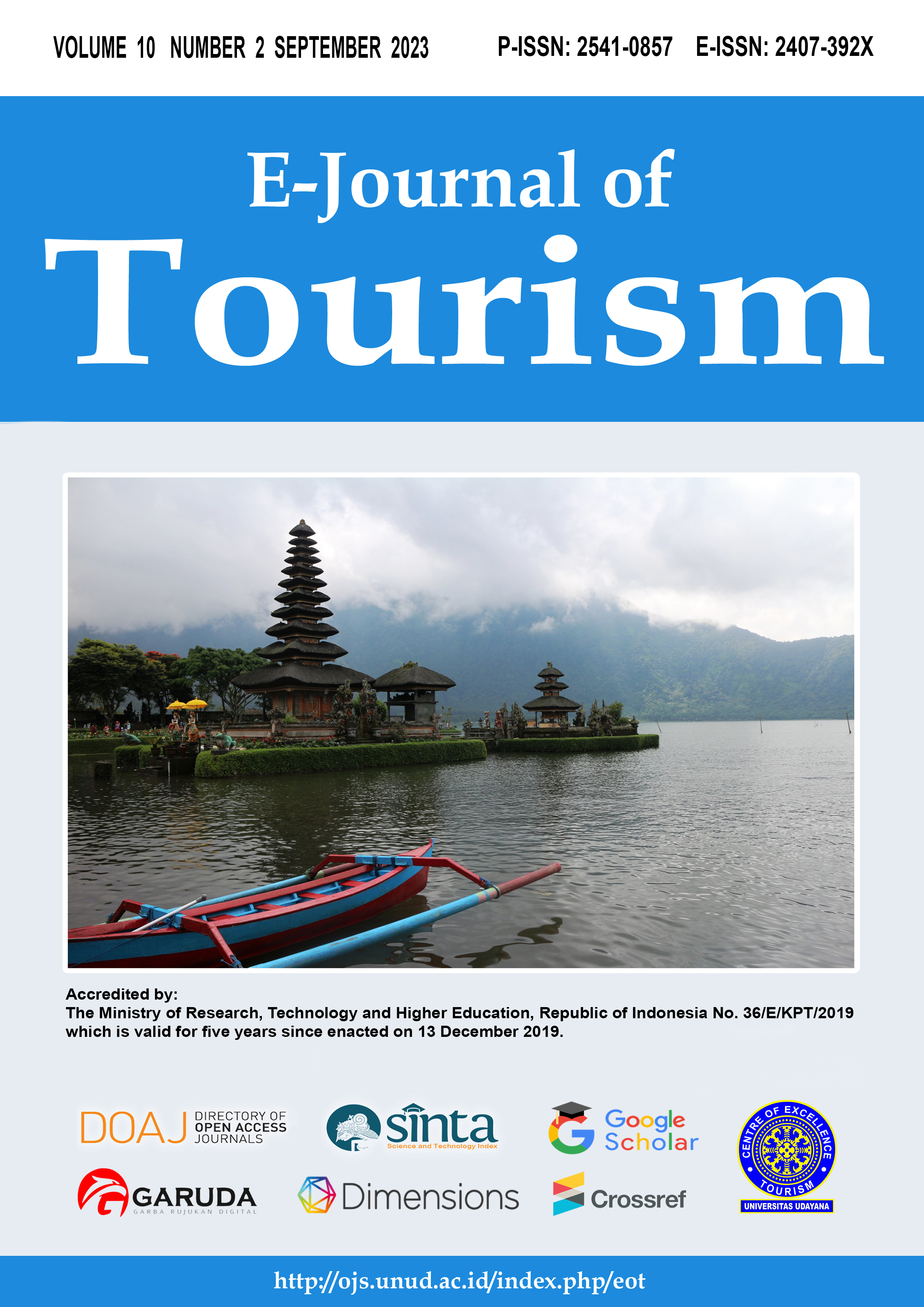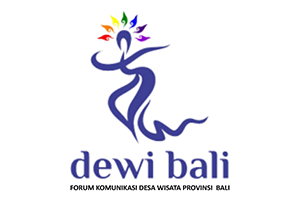Bibiliometric Mapping of Local Communities’ Environmental Conservation Behaviour
Abstract
Before new trends emerge after the COVID pandemic is over, this paper aims to examine the development of recent research trends in the theories and methods applied to studies of local communities' behaviours towards environmental protection in the years 2018–2021. This paper presents a review of more than one thousand local communities' environmental conservation behaviours that was published between 2018 and 2021. The purpose of this research is to achieve its objective. Following that, content analysis was performed on the articles that were pertinent. In order to clarify, categorise, and interpret the current research on rural tourism definitions and applications, a classification scheme and an extensive literature review have been presented in this article. Both of these elements are presented in this paper. A total of 38 academic papers from 25 different journals published between the years 2018 and 2021 are included in this review's classification scheme. These papers are organised according to their use of one of five primary keywords: local, community, environmental, conservation, or behaviour. The fact that the articles under consideration in this research were only found in the Scopus database represents a potential limitation of the bibliometric mapping. This research contributes to the existing body of knowledge by conducting a bibliometric review of studies that have already investigated locals' perspectives on tourism, and this review adds to the tourism literature by analysing the growing trend of looking at how different communities' actions affect environmental protection. Future research on these trends can be guided by identifying where the gaps in knowledge currently exist.
Downloads
References
Anwar, R. K., Hadia, M. S., Hendarmawan, & Khadijah, U. (2021). Community Participation In Environmental Management At Jatiluhur Reservoir Tourism Site, Indonesia. Procedia Environmental Science, Engineering and Management, 8(2), 363-370. National Society of Environmental Science and Engineering .
Bajrami, D.D., Radosavac, A., Cimbaljević, M., Tretiakova, T. N., & Syromiatnikova, Y. A. (2020). Determinants of residents’ support for Sustainable Tourism Development: Implications for Rural Communities. Sustainability, 12(22), 9438. https://doi.org/10.3390/su12229438
Becheikh, N., Landry, R., & Amara, N. (2006). Lessons from innovation empirical studies in the manufacturing sector: A systematic review of the literature from 1993–2003. Technovation, 26(5-6), 644–664. https://doi.org/10.1016/j.technovation.2005.06.016
Chu, E. W., & Karr, J. R. (2017). Environmental impact: Concept, Consequences, measurement. Reference Module in Life Sciences. https://doi.org/10.1016/b978-0-12-809633-8.02380-3
Donthu, N., Kumar, S., Mukherjee, D., Pandey, N., & Lim, W. M. (2021). How to conduct a bibliometric analysis: An overview and guidelines. Journal of Business Research, 133, 285–296. https://doi.org/10.1016/j.jbusres.2021.04.070
Fang, Q. (2013). Chinese complaint system: Natural resistance. Abingdon, England: Routledge.
Fang, W. T. (2020). Rural Tourism. Tourism in Emerging Economies. Singapore: Springer.
Gunawijaya, J., & Pratiwi, A. (2016). Destination development for rural tourism area in Wanayasa, Puwakarta, West Java, Indonesia. E-Journal of Tourism. https://doi.org/10.24922/eot.v3i2.24003
José de Oliveira, O., Francisco da Silva, F., Juliani, F., César Ferreira Motta Barbosa, L., & Vieira Nunhes, T. (2019). Bibliometric Method for Mapping the State-of-the-Art and Identifying Research Gaps and Trends in Literature: An Essential Instrument to Support the Development of Scientific Projects. Scientometrics Recent Advances. doi:10.5772/intechopen.85856
Junaid, I., Sigala, M., & Banchit, A. (2021). Implementing community-based tourism (CBT): Lessons learnt and implications by involving students in a CBT project in Laelae Island, Indonesia. Journal of Hospitality, Leisure, Sport & Tourism Education, 29, 100295. https://doi.org/10.1016/j.jhlste.2020.100295
Kusumawardhani, Y. (2022). Systematic Literature Review and Future Agenda: Leadership Style and dimension in rural tourism settings. E-Journal of Tourism, 157. https://doi.org/10.24922/eot.v9i2.89035
Lee, C.-C., & Chang, C.-P. (2008). Tourism Development and economic growth: A closer look at panels. Tourism Management, 29(1), 180–192. https://doi.org/10.1016/j.tourman.2007.02.013
Lopes, H. D., Remoaldo, P., & Ribeiro, V. (2019). Residents' perceptions of tourism activity in a rural North-Eastern Portuguese community: A cluster analysis. Bulletin of Geography. Socio-economic series, 46, 119-135.
López-Sanz, J. M., Penelas-Leguía, A., Gutiérrez-Rodríguez, P., & Cuesta-Valiño, P. (2021). Sustainable development and consumer behavior in rural tourism—the importance of image and loyalty for host communities. Sustainability, 13(9), 4763. https://doi.org/10.3390/su13094763
Mabibibi, M. A., Dube, K., & Thwala, K. (2021). Successes and challenges in Sustainable Development Goals Localisation for host communities around Kruger National Park. Sustainability, 13(10), 5341. https://doi.org/10.3390/su13105341
Martínez, V., & Blanco, R. (2013). Hacia una gestión sostenible de las Actividades Turísticas en Los Espacios Rurales y naturales. Revista Internacional De Organizaciones, (10), 131. https://doi.org/10.17345/rio10.131-155
Muhamad, M., & Budiani, S. R. (2022). Rural Creative Tourism as a growth triangle on the slopes of Mount Sumbing, Magelang. E-Journal of Tourism, 47. https://doi.org/10.24922/eot.v9i1.84035
Muresan, I., Oroian, C., Harun, R., Arion, F., Porutiu, A., Chiciudean, G., Todea, A., & Lile, R. (2016). Local residents’ attitude toward sustainable rural tourism development. Sustainability, 8(1), 100. https://doi.org/10.3390/su8010100
Nguyen, P. T., & Wells, S. (2017). Systemic indicators for rural communities in developing economies: Bringing the shared vision into being. Systemic Practice and Action Research, 31(2), 159–177. https://doi.org/10.1007/s11213-017-9421-z
OECD. (1994). Creating Rural Indicators for Shaping Territorial Policies (Paris: OECD).
Paramati, S. R., Alam, M. S., & Chen, C.-F. (2016). The effects of tourism on economic growth and co2emissions: A comparison between developed and developing economies. Journal of Travel Research, 56(6), 712–724. https://doi.org/10.1177/0047287516667848
Pickel-Chevalier, S., Bendesa, I. K., & Darma Putra, I. N. (2021). The integrated touristic villages: An Indonesian model of sustainable tourism? Island Tourism Sustainability and Resiliency, 262–286. https://doi.org/10.4324/9781003280521-14
Priatmoko, S., Kabil, M., Purwoko, Y., & Dávid, L. D. (2021). Rethinking Sustainable Community-based tourism: A Villager’s point of view and case study in Pampang Village, Indonesia. Sustainability, 13(6), 3245. https://doi.org/10.3390/su13063245
Setiawan, B., Afiff, A. Z., & Heruwasto, I. (2020). Integrating the theory of planned behavior with norm activation in a pro-environmental context. Social Marketing Quarterly, 26(3), 244–258. https://doi.org/10.1177/1524500420949220
Shahbaz, M., Bashir, M. F., Bashir, M. A., & Shahzad, L. (2021). A bibliometric analysis and systematic literature review of Tourism-Environmental Degradation Nexus. Environmental Science and Pollution Research, 28(41), 58241–58257. https://doi.org/10.1007/s11356-021-14798-2
Shamshiry, E., Nadi, B., Bin Mokhtar, M., Komoo, I., Saadiah Hashim, H., & Yahaya, N. (2011). Integrated Models for Solid Waste Management in Tourism Regions: Langkawi Island, Malaysia. Journal of Environmental and Public Health, (1–5). doi:10.1155/2011/709549
Solano-Pinto, N., Garrido, D., Gértrudix-Barrio, F., & Fernández-Cézar, R. (2020). Is knowledge of circular economy, pro-environmental behavior, satisfaction with life, and beliefs a predictor of connectedness to nature in rural children and adolescents? A pilot study. Sustainability, 12(23), 9951. https://doi.org/10.3390/su12239951
Thorpe, R., Holt, R., Macpherson, A., & Pittaway, L. (2005). Using knowledge within small and medium-sized firms: A systematic review of the evidence. International Journal of Management Reviews, 7(4), 257–281. https://doi.org/10.1111/j.1468-2370.2005.00116.x
Wardana, I. M., Sukaatmadja, I. P., Yasa, N. N., & Setini, M. (2020). Comparative and competitives advantages: Perspective of rural tourism (study on tourism in the Province of Bali Indonesia). GeoJournal of Tourism and Geosites, 33(4), 1493–1500. https://doi.org/10.30892/gtg.334spl07-598
Weaver, D. B., & Lawton, L. (2014). Tourism management. Wiley.
Yu, J. (2005). Tudi wenti yi chengwei nongmin weiquan kangzheng de jiaodian (Land problemshave become the focal point of peasants’ rights struggles). Diaoyan shijie (World of survey and research) 18(3), 22–3.

This work is licensed under a Creative Commons Attribution 4.0 International License.
The copyright of the received article shall be assigned to the journal as the publisher of the journal. The intended copyright includes the right to publish the article in various forms (including reprints). The journal maintains the publishing rights to the published articles.




















